Course Feedback
On Wednesday morning we heard a talk by artist Fran Cottell about house projects, an interesting exhibition that breaks down the boundaries between private and public, art and life, turning private houses into art galleries by installation art that allows viewers to clearly see and even participate in the lives of the owners. At the same time, the exhibition also blurs the line between the curator and the artist, who can not only arrange the exhibition, but also create the art.
In this lesson, I made a preliminary analysis of what kind of exhibition can be planned. Since I originally studied music, I wondered if I could incorporate elements of music into the art exhibition. I wonder if it is possible to do an artistic analysis of characters in musicals or operas. In this regard, my current idea is to analyze the changing social status of women and the development of the feminist movement in different periods through the costumes and lines in operas or musicals. For example, by the romantic period, such as the opera Carmen, women had begun to seek freedom and independence. I hope that through pictures and videos in the exhibition, the audience can see these changes more directly. Sarah, who was in the same group, suggested that I check out The Taylor swift V and an exhibition in London 2024, which I thought would be very helpful.
Exhibition Viewing Sharing
After class, I went to the latest exhibition at fruit market, which is about the artist Barry Le Va, who advocates minimalist art, using glass, powder and other materials to explore the movement of objects from one state to another. Before creating each piece, he would draw a rough draft and attach some text. In addition, he draws on knowledge from other fields, such as recreating chemical elements in colorful colors.
- Barry’s work 1
- Barry‘s work 2
- Barry’s work 3
- Barry‘s sketch
(Barry’s work 3)
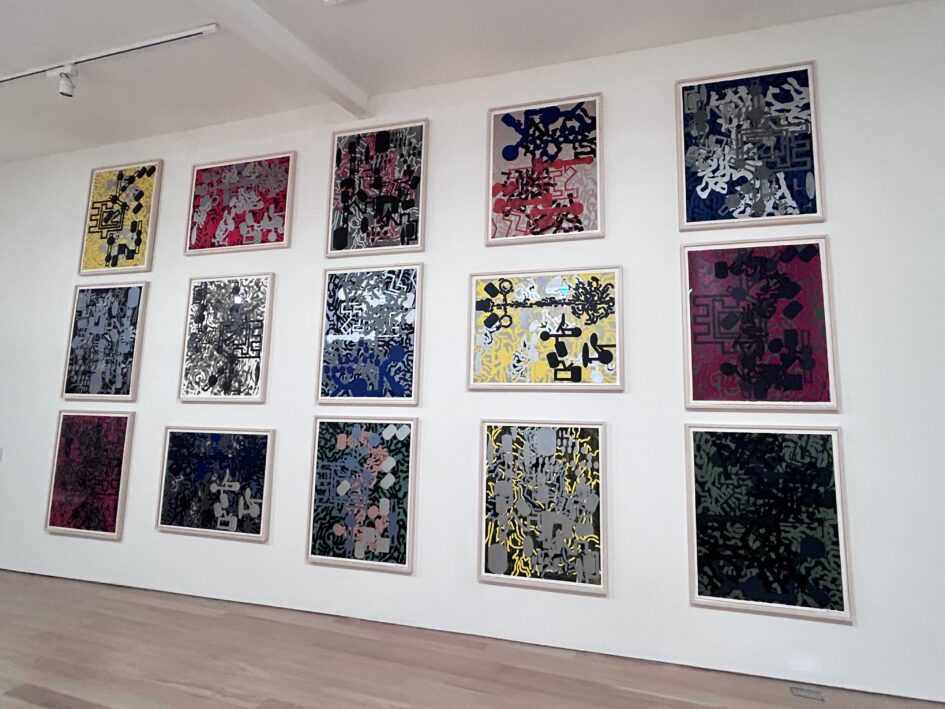
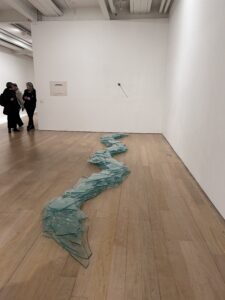
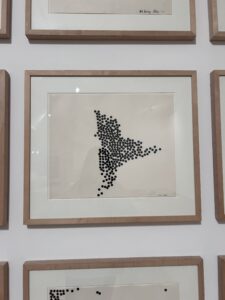
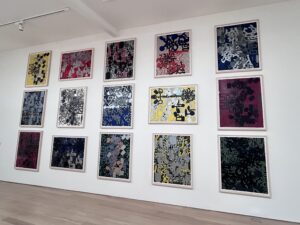
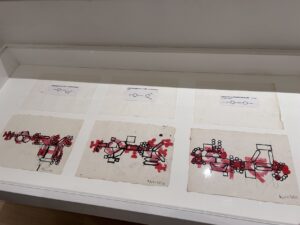


6 February 2025 at 14:10
Your first blog starts with a sincere acknowledgement of your lack of experience in exhibition curation. You highlight the valuable insights you’ve gained about the various formats exhibitions can take and the diversity in curation. This realisation is significant, and I hope it inspires you to explore creative ways to present your ideas. Your summary of the lecture on Broken Globalization is clear, and your opinions on curation are insightful. I encourage you to continue sharing your thoughts, as your critical reflections will help develop your ideas further and are key to the success of this course.
In your second post, you recognise the different types of arts organisations, which is a great starting point for identifying those that resonate with you. Your experience at the Chengdu Biennale expanded your appreciation of contemporary art, and I recommend researching more biennials and art spaces. This will introduce you to new artists and enhance your speculative project. It was great to see you include some images to illustrate your experiences, I would encourage you to expand on this in future posts. Remember, we discussed ‘collectives’ instead of ‘groups’; precise language is important. Your understanding of collaboration within a collective is clear, so keep expressing what matters most to you as you develop your project.
In your third post, you articulately conveyed your thoughts on Fran’s insightful talk, showcasing a commendable level of engagement. While your speculative project idea is thoughtfully conceived, enriching your discussion with specific examples of the artwork you intend to showcase would greatly enhance your narrative. As you reflect on the works displayed at the Fruit Market, I encourage you to incorporate a critical analysis that reveals your deeper understanding of the elements at play in the exhibition. This will not only strengthen your argument but also provide a more vivid picture for your audience.
23 February 2025 at 22:45
Your blog provides an engaging and thoughtful reflection on exhibition curation, showing a keen awareness of how different spaces and formats influence audience engagement. Your discussion of the Chengdu Biennale highlights its scale and its integration of local and international artistic perspectives, demonstrating a growing appreciation for how exhibitions shape contemporary art discourse. I also found your insights into Fran Cottell’s house projects particularly compelling, as they challenge conventional exhibition boundaries and invite participation in unique ways.
Your speculative project on integrating music and feminist analysis into curation is a fascinating idea, and your exploration of costumes and character development in opera as a lens for social critique is well-conceived. It’s great to see that you’re considering interactive elements to engage audiences more deeply. To further strengthen your project, you might want to incorporate specific case studies of past exhibitions that successfully blended music and visual arts. Keep up the reflective and critical approach—your engagement with both theory and practice is evident, and I look forward to seeing how your ideas evolve!